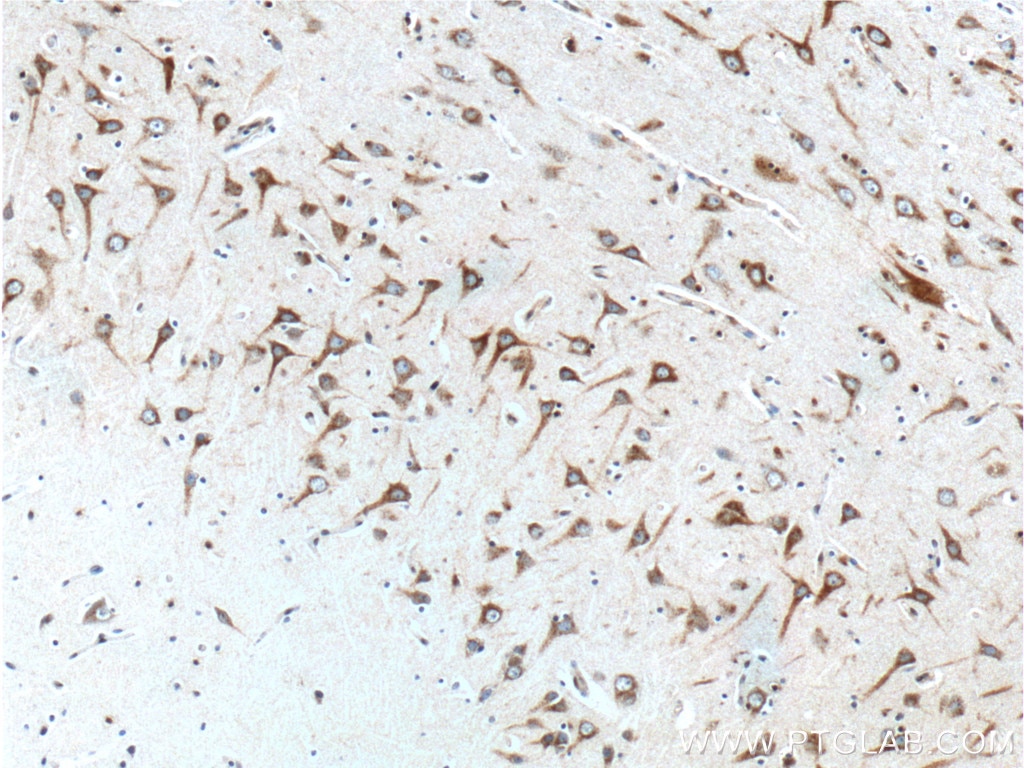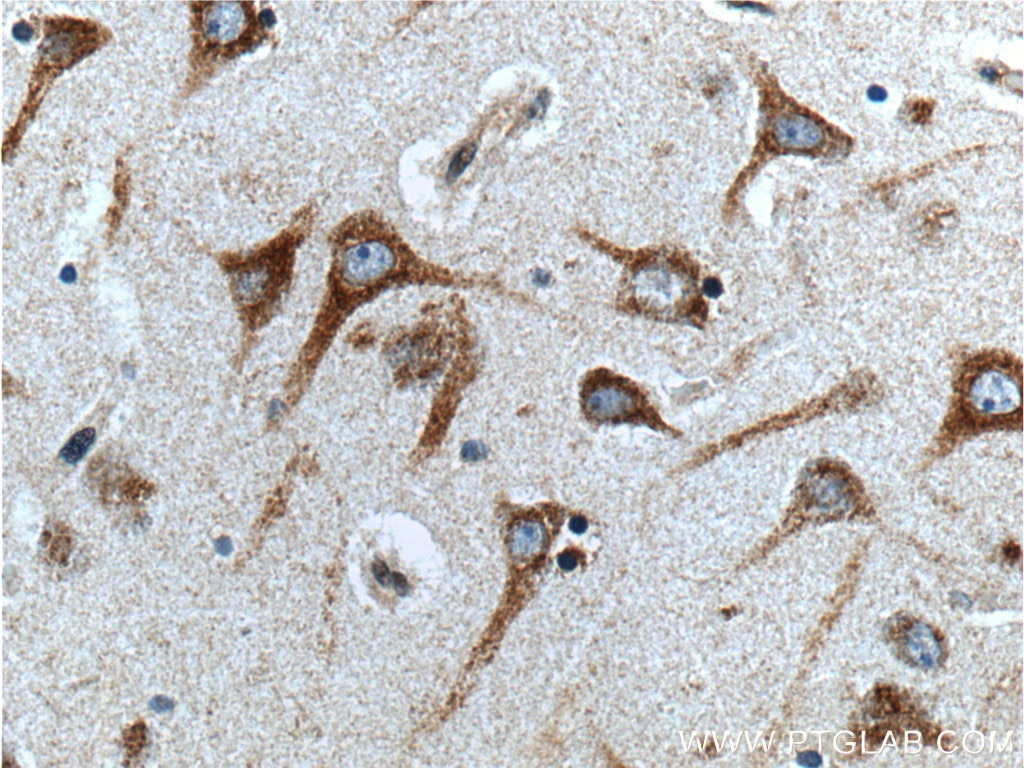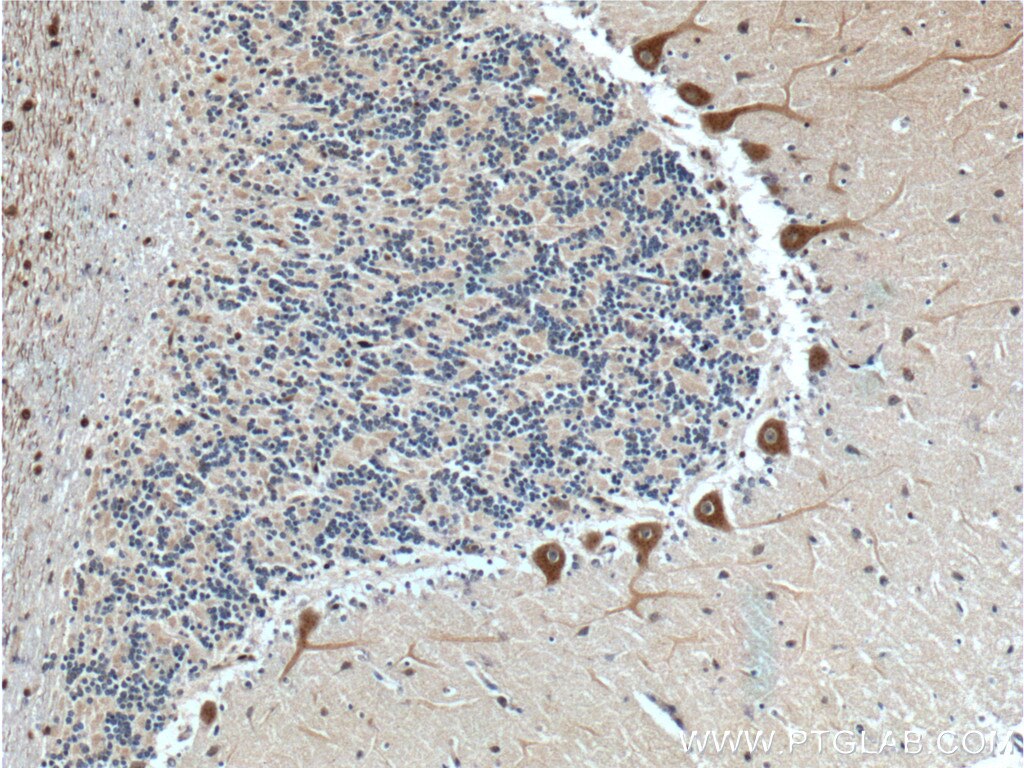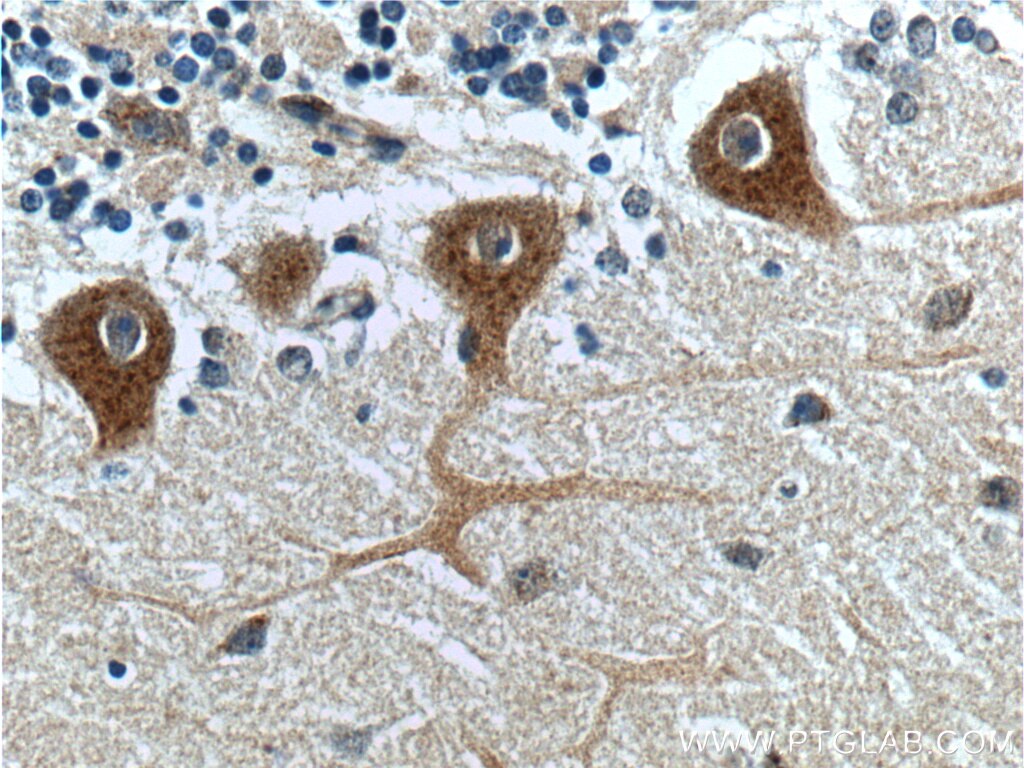GPR111 Polyklonaler Antikörper
GPR111 Polyklonal Antikörper für IHC,ELISA
Wirt / Isotyp
Kaninchen / IgG
Getestete Reaktivität
human und mehr (1)
Anwendung
IHC, IF, ELISA
Konjugation
Unkonjugiert
Kat-Nr. : 24965-1-AP
Synonyme
Galerie der Validierungsdaten
Geprüfte Anwendungen
| Erfolgreiche Detektion in IHC | humanes Hirngewebe, humanes Cerebellum-Gewebe Hinweis: Antigendemaskierung mit TE-Puffer pH 9,0 empfohlen. (*) Wahlweise kann die Antigendemaskierung auch mit Citratpuffer pH 6,0 erfolgen. |
Empfohlene Verdünnung
| Anwendung | Verdünnung |
|---|---|
| Immunhistochemie (IHC) | IHC : 1:50-1:500 |
| It is recommended that this reagent should be titrated in each testing system to obtain optimal results. | |
| Sample-dependent, check data in validation data gallery | |
Veröffentlichte Anwendungen
| IF | See 1 publications below |
Produktinformation
24965-1-AP bindet in IHC, IF, ELISA GPR111 und zeigt Reaktivität mit human
| Getestete Reaktivität | human |
| In Publikationen genannte Reaktivität | Maus |
| Wirt / Isotyp | Kaninchen / IgG |
| Klonalität | Polyklonal |
| Typ | Antikörper |
| Immunogen | GPR111 fusion protein Ag21705 |
| Vollständiger Name | G protein-coupled receptor 111 |
| Berechnetes Molekulargewicht | 708 aa, 79 kDa |
| GenBank-Zugangsnummer | BC157025 |
| Gene symbol | GPR111 |
| Gene ID (NCBI) | 222611 |
| Konjugation | Unkonjugiert |
| Form | Liquid |
| Reinigungsmethode | Antigen-Affinitätsreinigung |
| Lagerungspuffer | PBS mit 0.02% Natriumazid und 50% Glycerin pH 7.3. |
| Lagerungsbedingungen | Bei -20°C lagern. Nach dem Versand ein Jahr lang stabil Aliquotieren ist bei -20oC Lagerung nicht notwendig. 20ul Größen enthalten 0,1% BSA. |
Protokolle
| Produktspezifische Protokolle | |
|---|---|
| IHC protocol for GPR111 antibody 24965-1-AP | Protokoll herunterladen |
| Standard-Protokolle | |
|---|---|
| Klicken Sie hier, um unsere Standardprotokolle anzuzeigen |
Publikationen
| Species | Application | Title |
|---|---|---|
FASEB J Deficiency of G protein-coupled receptor Gpr111/Adgrf2 causes enamel hypomineralization in mice by alteration of the expression of kallikrein-related peptidase 4 (Klk4) during pH cycling process |





